- À propos de notre entreprise
- À propos de notre rapport
- Stratégies de développement durable
- Objectifs et performances
- Indices de reporting ESG
- Téléchargements de rapports
Pourquoi les déchets sont importants
Gouvernance
50
Installations atteignant le zéro émission
Déchets en décharge
Nos efforts pour réduire les déchets sont mondiaux, chaque installation travaillant vers notre objectif 2025.
En 2021, le Conseil de direction de Greif a commencé à superviser cinq questions de durabilité, dont les déchets, dans le but d'accélérer davantage notre stratégie ESG. Nous rendons désormais compte des déchets chaque trimestre à l'équipe de direction exécutive. Nous avons également ajouté un indicateur clé de performance des déchets à la fiche d'évaluation de l'entreprise de Greif et aux rapports mensuels qui sont partagés avec les responsables et suivis via le Greif Business System (GBS) et la fiche d'évaluation Must Win Battle (MWB). L'équipe mondiale des déchets, composée de collègues de Greif de chaque unité commerciale et région, se réunit tous les mois pour discuter de nos stratégies de réduction des déchets. L'équipe des déchets tient la direction des installations responsable de la gestion et de la réduction des déchets. Greif met en œuvre des stratégies d'engagement des collègues pour permettre aux collègues de production de se concentrer sur la réduction des déchets. Santé et sécurité environnementales Les politiques, procédures et formations (EHS) régissent l’étiquetage, la manutention, le stockage et le transport des déchets dangereux.
En 2021, 54 usines ont organisé une visite virtuelle qui comprenait le partage d'informations sur la durabilité, y compris les déchets. Les membres de l'équipe de direction de Greif et de l'équipe de direction de GIP ont participé aux visites virtuelles pour collaborer et soutenir nos progrès continus en matière de gestion des déchets.
Le système de gestion de la conformité (CMS) de Greif nous permet de collecter des données, de surveiller les performances et de mesurer les progrès avec précision et efficacité. En 2020 et en 2021, nous avons amélioré notre capacité à visualiser et à gérer les données sur les déchets dans le CMS en permettant un accès mensuel aux données. Cela permet à chaque établissement d'obtenir plus rapidement un aperçu des données et de mettre en œuvre des programmes tout au long de l'année. Dans le cadre de notre CMS, nous exigeons que toutes les installations déclarent mensuellement leurs données sur les déchets, soumettent des factures pour vérification en plus des feuilles de route. Nos données sur les déchets sont soumises à une évaluation et à une vérification par notre équipe d'audit interne pour garantir la cohérence et la fiabilité.
Pour toutes les installations de Global Industrial Packaging (GIP), nous maintenons une matrice de déchets détaillée pour nous aider à comprendre les flux de déchets de chaque installation, la méthode d'élimination de chaque flux de déchets (recyclage, réutilisation, mise en décharge, etc.) et à gérer les progrès. Les matrices de déchets servent d'outil de collaboration permettant aux installations de comparer la gestion des flux de déchets courants. En 2021, notre activité PPS a commencé le processus de développement de matrices, permettant l'intégration à l'échelle de l'entreprise de nos données et programmes sur les déchets. Dans le cadre de ce processus, nous avons établi une base d'éducation et de formation dans l'ensemble de notre activité PPS, y compris des formations sur la saisie de données et l'identification des flux de déchets. Ces efforts ont permis à un certain nombre de nos installations d'atteindre ou de progresser de manière significative vers notre objectif de détourner 90 % des déchets des décharges dans toutes les installations. Nous achèverons nos matrices de déchets pour toutes les installations PPS en 2022.
Les installations qui n’ont pas encore atteint notre objectif de réacheminement des déchets d’ici 2025 sont chargées de créer une feuille de route trimestrielle ou semestrielle pour évaluer tous les flux de déchets destinés à la décharge et élaborer une stratégie de réacheminement. Chaque installation inclut au moins les trois principaux projets de réacheminement des déchets et rend compte des réductions de coûts associées, des réductions des déchets mis en décharge et de l’état d’avancement de chaque projet. Nos feuilles de route de réacheminement des déchets offrent un excellent aperçu de nos installations et de leurs progrès en matière de gestion des déchets, et aident les installations à améliorer leurs performances d’année en année. Nos feuilles de route jouent un rôle essentiel dans notre capacité à atteindre notre objectif de réacheminement des déchets, permettant à chaque installation de comprendre ses besoins en matière de gestion des déchets et d’identifier les mesures d’amélioration. La formation du personnel en matière de déchets est un autre élément clé de l’amélioration continue dans la réalisation de notre stratégie et de nos objectifs en matière de déchets.
Greif s'est associé à Operation Clean Sweep (OCS) pour étendre son engagement à réduire les déchets plastiques. Dans le cadre de ce partenariat, nous nous engageons à effectuer des audits dans nos installations pour évaluer nos opérations de manipulation de résine plastique et mettre en œuvre les meilleures pratiques d'entretien et de confinement des granulés, des flocons et de la poudre. Des audits par des tiers ont été menés sur nos sites de Hazleton, en Pennsylvanie, de Houston, au Texas et de Mt. Sterling, dans le Kentucky, de 2017 à 2019, avant d'être suspendus en raison de la pandémie de COVID-19. Toutes les installations ont réussi nos audits internes continus et nous reprendrons les audits par des tiers en 2022.
Objectifs et progrès
En 2018, nous nous sommes fixé comme objectif de détourner 90 % des déchets des décharges de toutes les installations de production Greif dans le monde d'ici la fin de l'exercice 2025. En 2020, nous avons également commencé à inclure les données sur les déchets de nos anciennes installations de Caraustar, élargissant ainsi notre objectif à l'ensemble de notre entreprise. À l'échelle mondiale, nous avons détourné 85 % des déchets des décharges en 2021 et 149 installations Greif ont atteint notre objectif de détournement des déchets. Ces installations continuent d'améliorer leurs pratiques de gestion des déchets en exploitant les matrices de déchets et en collaborant étroitement avec nos parties prenantes pour soutenir notre stratégie d'économie circulaire. En 2021, 60 installations ont atteint un détournement de plus de 99 %, dont 50 installations ont atteint zéro déchet en décharge.
Progrès:
|
Exercice 2021* |
Installations avec dérivation 90%+ |
Installations avec dérivation 99%+ |
Installations avec zéro déchet en décharge |
|---|---|---|---|
|
Total |
149 |
60 |
50 |
|
Amérique du Nord |
74 |
17 |
12** |
|
Europe |
54 |
32 |
29** |
|
l'Amérique latine |
9 |
1 |
0 |
|
Asie-Pacifique |
12 |
10 |
9 |
**Les données de quatre installations qui ont été fermées au cours de l'exercice 21 sont incluses
Performance
FLUX DE DÉCHETS
|
|
Exercice 2018 |
Exercice 2019 |
Exercice 2020 |
Exercice 2021 |
|---|---|---|---|---|
| Déchets dangereux | ||||
|
Quantité totale de déchets mis en décharge |
1,639 |
2,428 |
3,608 |
1,033 |
|
Déchets en décharge |
1,292 |
1,161 |
2,989 |
584 |
|
Incinéré (pas de valorisation énergétique)**** |
347 |
1,267 |
619 |
449 |
|
Total des déchets non mis en décharge* |
14,105 |
20,725 |
19,199 |
14,207 |
|
Incinéré (avec récupération d'énergie)** |
3,372 |
4,073 |
3,275 |
4,480 |
|
Composté*** |
0 |
0 |
1 |
0 |
|
Recyclé† |
7,604 |
14,084 |
14,160 |
8,502 |
|
Réutilis醆 |
1,513 |
651 |
706 |
482 |
|
Récupér醆† |
217 |
366 |
376 |
172 |
|
Divers (hors décharge) †††† |
1,399 |
1,551 |
681 |
571 |
|
Total Déchets dangereux |
15,744 |
23,153 |
22,807 |
15,240 |
|
Déchets non dangereux |
||||
|
Quantité totale de déchets mis en décharge |
54,594 |
33,837 |
137,211 |
155,367 |
|
Déchets en décharge |
54,110 |
33,380 |
137,066 |
155,148 |
|
Incinéré (pas de valorisation énergétique)**** |
485 |
457 |
151 |
218 |
|
Total des déchets non mis en décharge* |
257,219 |
184,357 |
326,546 |
842,268 |
|
Incinéré (avec récupération d'énergie)** |
2,054 |
2,950 |
17,006 |
13,409 |
|
Composté*** |
35 |
15,784 |
49,734 |
54,132 |
|
Recyclé† |
231,997 |
141,217 |
212,075 |
727,737 |
|
Réutilis醆 |
11,641 |
12,321 |
19,441 |
18,445 |
|
Récupér醆† |
9,439 |
9,847 |
11,701 |
12,192 |
|
Divers (hors décharge)†††† |
2,052 |
2,239 |
16,589 |
16,354 |
|
Total des déchets non dangereux |
311,813 |
218,194 |
463,757 |
997,634 |
|
Total des déchets (dangereux et non dangereux) |
327,557 |
241,347 |
486,564 |
1,012,874 |
Remarques :
- Les anciennes installations de Caraustar ont été intégrées dans les rapports sur les déchets au cours de l'exercice 2020.
- Le total des déchets et le recyclage des déchets non dangereux ont doublé cette année grâce à l'inclusion de données supplémentaires provenant des installations de RFG. L'année dernière, RFG et IPG n'incluaient que les données de leurs propres flux de déchets opérationnels. Cependant, RFG collecte également les vieux papiers du marché et les recycle.
Hors décharge : Comprend les méthodes de traitement physico-chimiques, d'incinération avec récupération d'énergie, recyclées, réutilisées, récupérées, compostées et de mélange de carburants.
Incinéré (avec valorisation énergétique) : Méthode de traitement impliquant la combustion de déchets solides qui donne lieu à une captation d'énergie.
Composté : Méthode de traitement impliquant la décomposition biologique de déchets d'exploitation solides ou liquides.
Incinéré (sans valorisation énergétique) : Méthode de traitement impliquant la combustion de déchets solides qui ne donne pas lieu à une valorisation énergétique.
Recyclé : Méthode de traitement impliquant la séparation, la préparation et la vente de matières recyclables aux fabricants utilisateurs finaux.
Réutilisé : Méthode de traitement impliquant l’utilisation d’un matériau pour son usage initial plusieurs fois.
Récupéré : Méthode de traitement impliquant le processus d'extraction et de conversion de matériaux à partir de matériaux recyclés pour être réutilisés.
†††† Divers (hors décharge) : Toutes les autres méthodes de traitement non mentionnées précédemment, y compris l’injection en puits profond et le stockage sur place.
Installation Greif à Houston
L'usine Greif de Houston a constaté une nette amélioration de sa capacité à détourner les déchets des décharges en 2021. L'usine a installé un dé-chimer, un dispositif conçu pour retirer de manière sûre et efficace les carillons métalliques utilisés pour fixer le haut et le bas des fûts de fibres. Une fois les carillons retirés, la fibre et le métal peuvent être dirigés vers des flux de déchets séparés pour être recyclés. Depuis l'installation du dé-chimer en juillet 2021, l'usine a détourné plus de 90 % de ses déchets des décharges. L'usine envoie la fibre à notre groupe de recyclage PPS, réduisant ainsi encore le coût d'élimination des déchets.
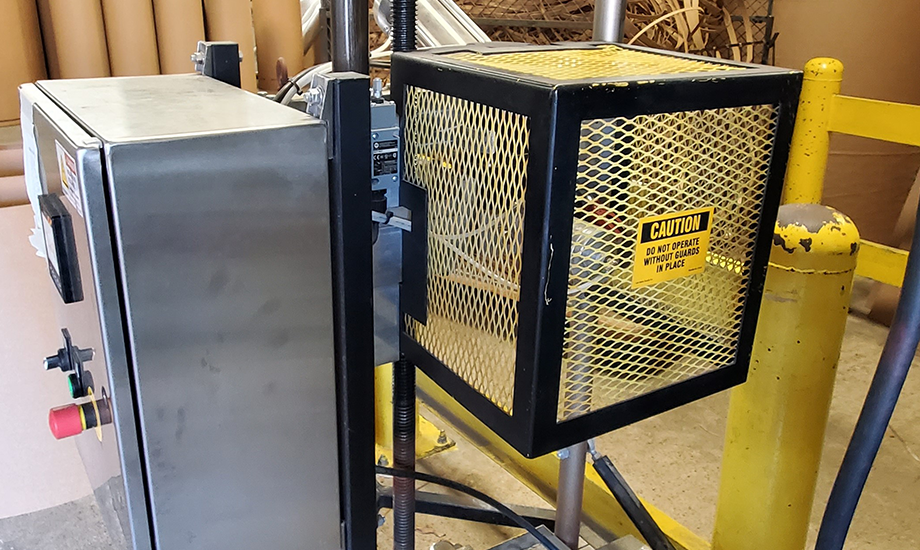
Greif Hadımköy atteint et dépasse son objectif de 90 % de valorisation des déchets
En 2020, l’équipe de Hadımköy en Turquie a élaboré une feuille de route des déchets en évaluant ses flux de déchets et en déterminant un chemin pour réduire ses déchets envoyés à la décharge. L’équipe de Hadımköy a introduit des bacs de séparation pour les déchets de papier dans la production, a séparé les restes de déchets alimentaires et les a envoyés aux refuges pour animaux locaux, et a introduit des bacs de séparation pour les déchets d’emballage et de papier dans la cafétéria. Au total, ces efforts ont conduit à une réduction de 7 % de leurs déchets mis en décharge. À la fin de 2020, Hadımköy a utilisé les projets de sa feuille de route des déchets pour réduire encore ses déchets mis en décharge de 5 % supplémentaires et a déjà dépassé l’objectif de déchets de l’entreprise pour 2025. En 2021, Hadımköy a encore réduit ses déchets envoyés à la décharge de 15 % supplémentaires par rapport à l’année précédente.
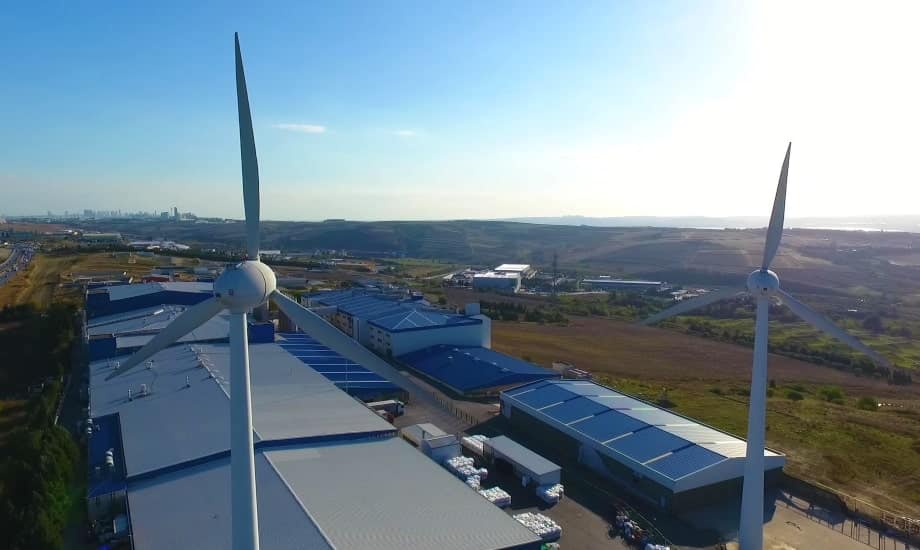
Réduire les COV grâce à l'utilisation de peintures extérieures à base d'eau
Greif s'engage à utiliser des peintures extérieures à base d'eau dans ses opérations, dans la mesure du possible, plutôt que des peintures extérieures à haute teneur en composés organiques volatils (COV). Dans Global Industrial Packaging (GIP) Amérique du Nord, huit de nos neuf usines sidérurgiques utilisent des peintures à base d'eau. Dans GIP Chine, l'usine Greif Zhuhai est passée à plus de 75 % de peintures à base d'eau et, en 2021, elle a commencé à tester l'utilisation de revêtements de fûts ordinaires à base d'eau dans nos produits pour réduire davantage l'impact des COV de nos produits. L'usine Greif Shanghai a également commencé le processus de conversion en 2021. Dans la zone EMEA, la République tchèque, la Belgique, l'Allemagne, la Hongrie et la Pologne utilisent des peintures à base d'eau en plus des peintures à base de solvants.
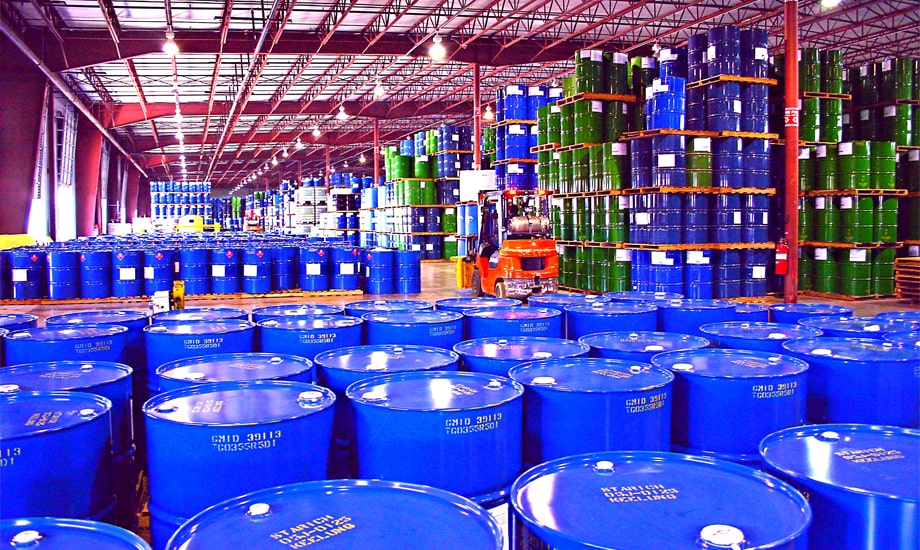
Réduire les déchets grâce à l'excellence du service client
En 2019, l'usine Global Industrial Packaging (GIP) de Greif en Suède a reçu une plainte d'un client selon laquelle les jerrycans étaient endommagés lors du déballage parce que le film plastique utilisé pour envelopper les palettes était trop serré et difficile à retirer. En réponse, l'usine a testé un certain nombre d'alternatives de film plus faciles à retirer et présentant moins de risques d'endommager les canettes et a finalement sélectionné une alternative qui réduisait l'utilisation de film de 48 %, économisant 7 500 kg de matériaux par an. La transition a également permis d'économiser 12 000 USD et une réduction des émissions de 22 000 kg. Afin de faire évoluer le projet, l'équipe a mis à jour la procédure opérationnelle standard pour l'utilisation de films similaires et a travaillé avec notre équipe d'approvisionnement pour mettre à jour le fournisseur et le matériau du film.
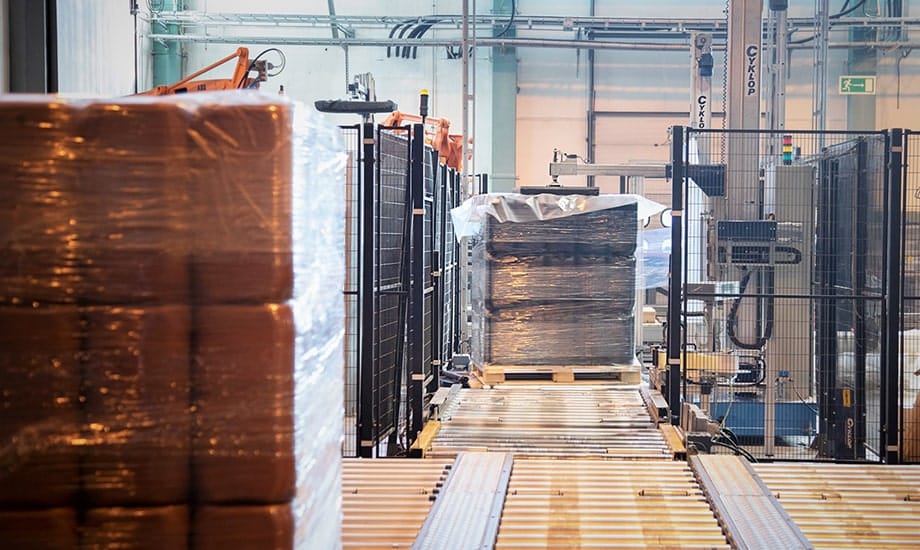
Initiatives de recyclage et de réutilisation dans l'usine GIP Flexibles
Notre usine GIP Flexibles de Thirsk, au Royaume-Uni, a mis en œuvre diverses initiatives liées au recyclage et à la réutilisation, en étroite collaboration avec nos clients et nos fournisseurs. L'usine a mis en place des programmes de réutilisation des séparateurs en carton, des palettes, des bobines de fil, des solvants, des tubes en sac sur rouleau et des chutes de bois. Nos initiatives de réutilisation comprennent une collaboration étroite avec les fournisseurs pour renvoyer les bobines et les séparateurs en carton afin qu'ils les réutilisent, réduisant ainsi les coûts et l'impact environnemental pour les deux entreprises. Nous travaillons également avec nos clients pour collecter les palettes et les tubes pour notre propre réutilisation. L'usine recycle également tout le plastique, le carton, le papier et les solvants qui ne peuvent pas être récupérés. Ces pratiques contribuent à réduire l'empreinte de Greif et peuvent souvent réduire les coûts, tels que les dépenses d'incinération.
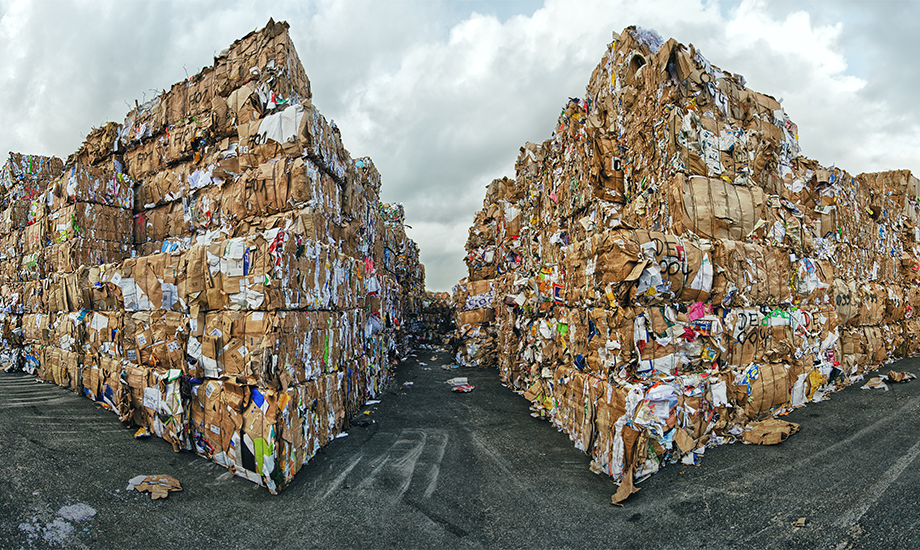
FAITS MARQUANTS EN MATIÈRE DE DURABILITÉ
85%
Des déchets détournés des décharges
Nos efforts pour réduire les déchets sont mondiaux, chaque installation travaillant vers notre objectif 2025.
50
Installations visant à atteindre le zéro déchet en décharge
Mettre en lumière les meilleures pratiques de gestion pour éliminer, réduire et détourner les déchets.





